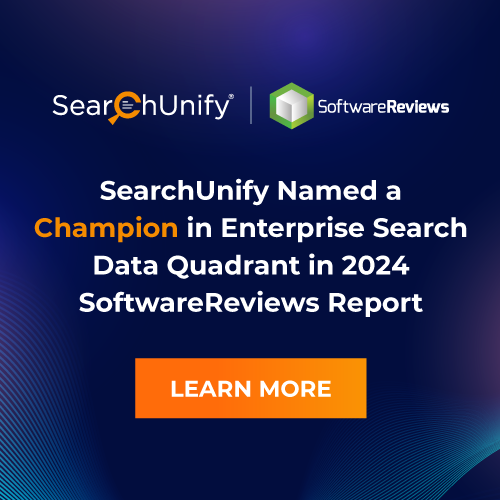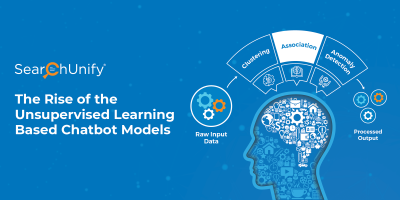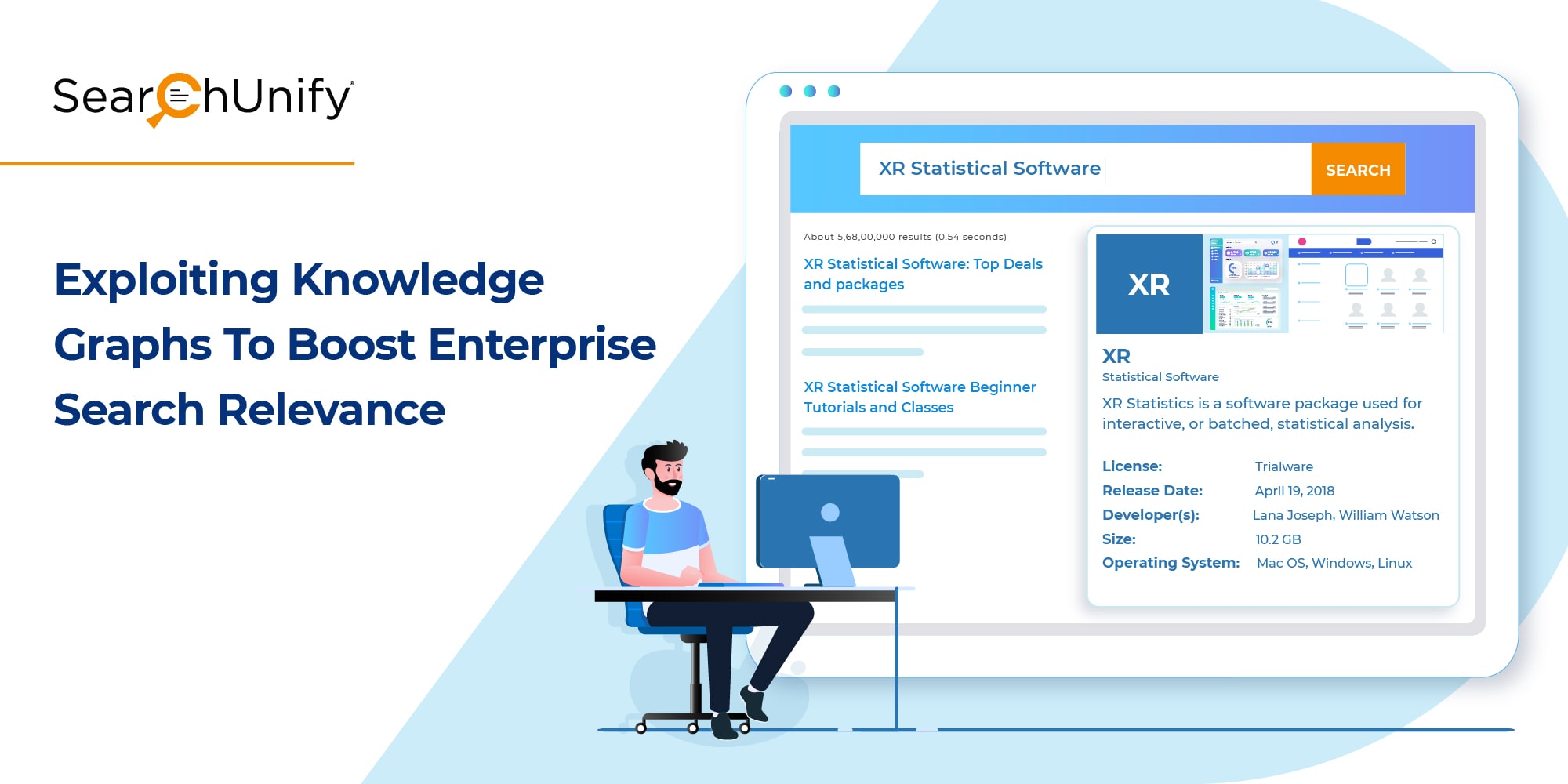
Tech giants have exploited big data to give birth to Siri and Alexa, a form of AI that surprises us every time we use it because it gets better every time. These AI apps are powered by well-built ‘knowledge graphs’ that help them provide relevant responses to users.
Is it possible for companies to create similar experiences in organizations? Can you build your own knowledge graph to drive users closer to relevant results? Are the so-called knowledge graphs the next big thing?
Let’s start with the basics.
A Crisp Introduction To Knowledge Graphs
A knowledge graph (KG) is a collection of interlinked information related to entities (people, events, places, etc.) much like mind maps, that is easily understandable. Look at this example to get a better idea: If you search “How many Oscars did Meryl Streep win” on Google, you see the result in the results section, and to the right of the results, you’re presented with something like below.
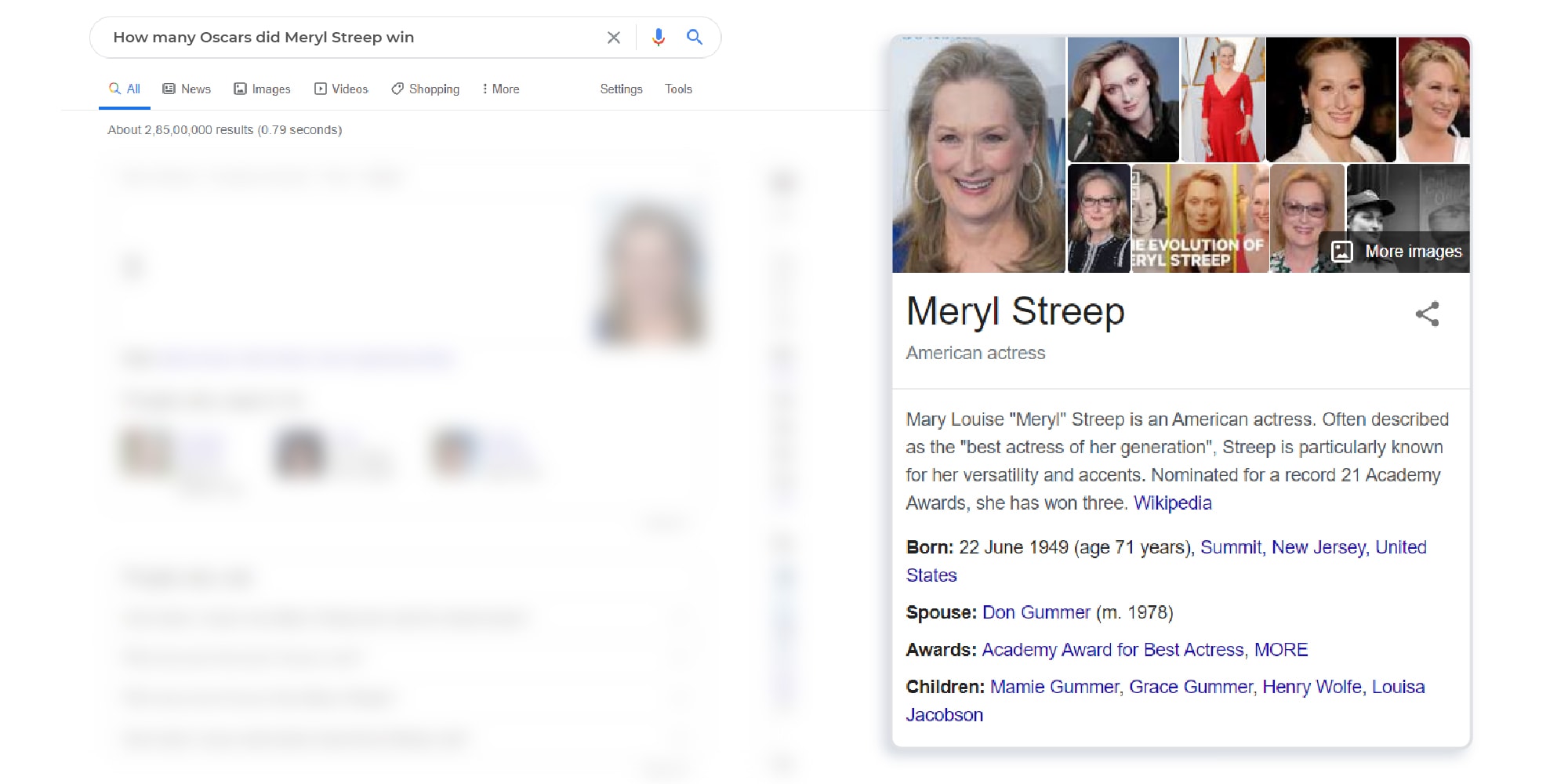
This panel extends to provide her latest movies and TV shows, quotes, links to social media profiles, and related information. All of this is displayed by Google using the ‘collection of information’ in its knowledge graph.
Every enterprise can leverage the foundational principles that make web search smarter and create its own enterprise KG for more effective data interlinking and enhancing search capabilities. Major players and social media giants have already sprung to action in utilizing its capabilities.
But Why All the Fuss?
A KG helps create an easily readable set of facts that become great resources for AI applications. In this blog, our main focus will be on enterprise search. KGs help revolutionize search on your portals to connect employees as well as customers with the most relevant information. Let’s discuss how exactly.
A search index contains mentions of nouns or entities i.e. things, people, places, events, etc., with implied relationships. A KG is built using relation extraction techniques, capturing semantic relations of words. This forms the base for mining logical rules from the constructed graph. Consider this.
Data Corpus
| Document 1 | Document 2 |
| Paul was born in Ottawa. | Ottawa is the capital city of Canada. |
This implies ⇒ Paul has Canadian citizenship.
BornInCity(a,b) ∧ CityInCountry(b,c) ⇒ Nationality(a,c)
Source: Bishan Yang et al. Embedding Entities and Relations for Learning and Inference in Knowledge bases.
This is a simple example of how you can extract information from structured data. When a user searches for something, this information is indexed by the search engine from the KG to provide relevant results. Imagine if you could tap the power of both structured and unstructured data trapped in various enterprise platforms. You could use it to solve business problems at scale with efficiency and speed.
How It Propels Search Relevancy
Relevancy means providing search results closest to the typed query. Therefore, decoding search queries at the backend by search engine forms the central part of the entire process. To do so, a search engine takes into account various things—alternative labels, taxonomy, ontology, etc. The machine learning algorithms of your search engine rely on all these to come up with results closest to the searched query. However, when you add knowledge graphs to the mix, it systematically improves the accuracy bringing you closer to relevancy. The results are more logical and trustworthy.
If you’re still scratching your head, below examples will enlighten you.
How It Enhances Employee Experience
John works at an IT firm that provides a host of services from automation to cloud-based solutions. He is a sales engineer. His primary role is to engage leads generated through various channels. There is this lead, Lana Joseph who has been visiting their website frequently. First, she read some blogs related to email marketing, and then she viewed one of the webinars. Her details such as her company name, employee size, etc were captured in the firm’s email marketing tool. John’s company has a well-developed knowledge graph in place that unified all the interactions at various touchpoints and developed nodes on the graph.
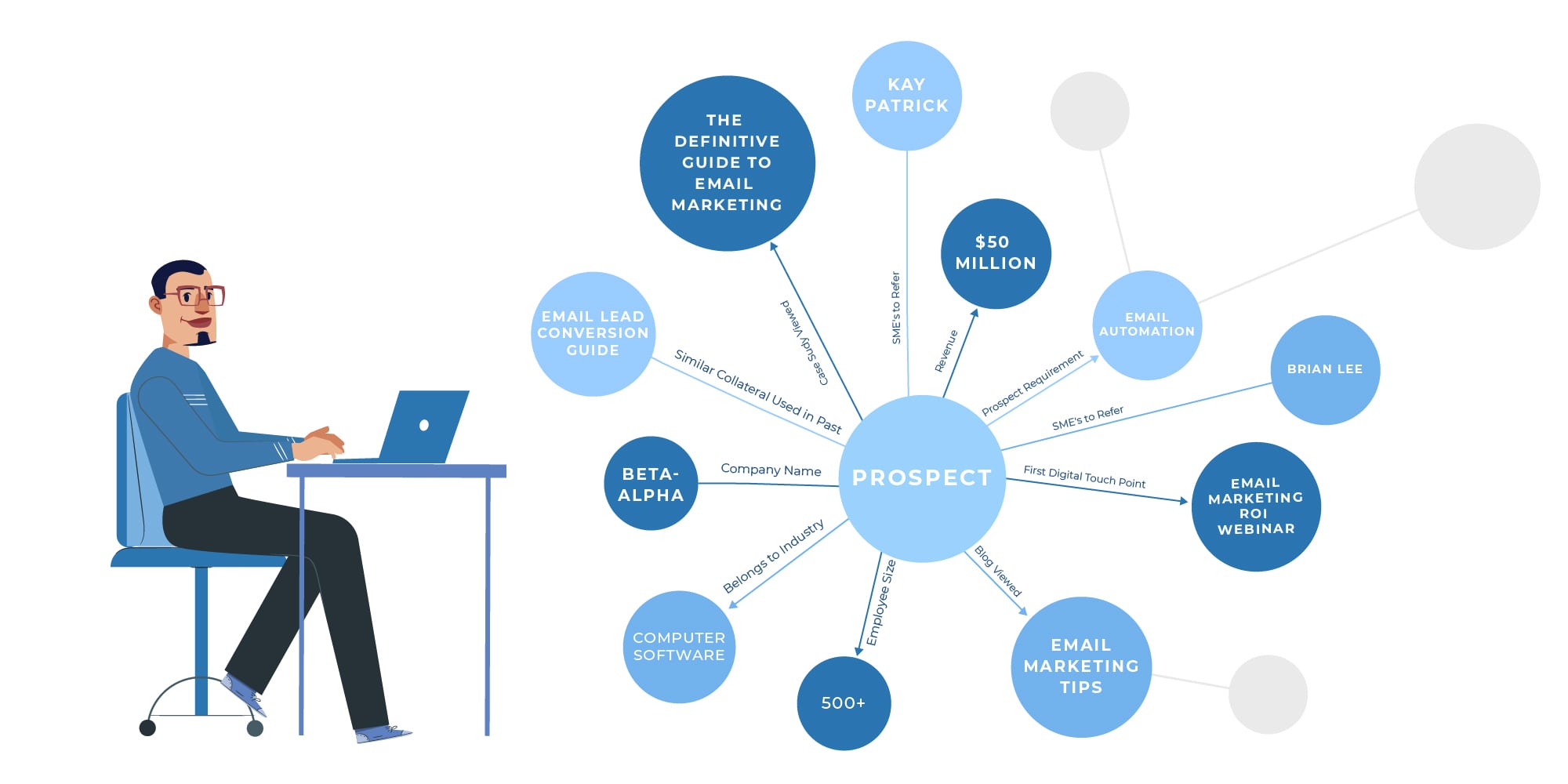
At the backend, this KG is getting populated using the techniques that are out of the scope of this blog. And the KG is being used by the search engine to self-learn and improve results. So, when John is asked to follow up on Lana, he simply searches her name and is presented with all the relevant information, so that he can put his best foot forward.
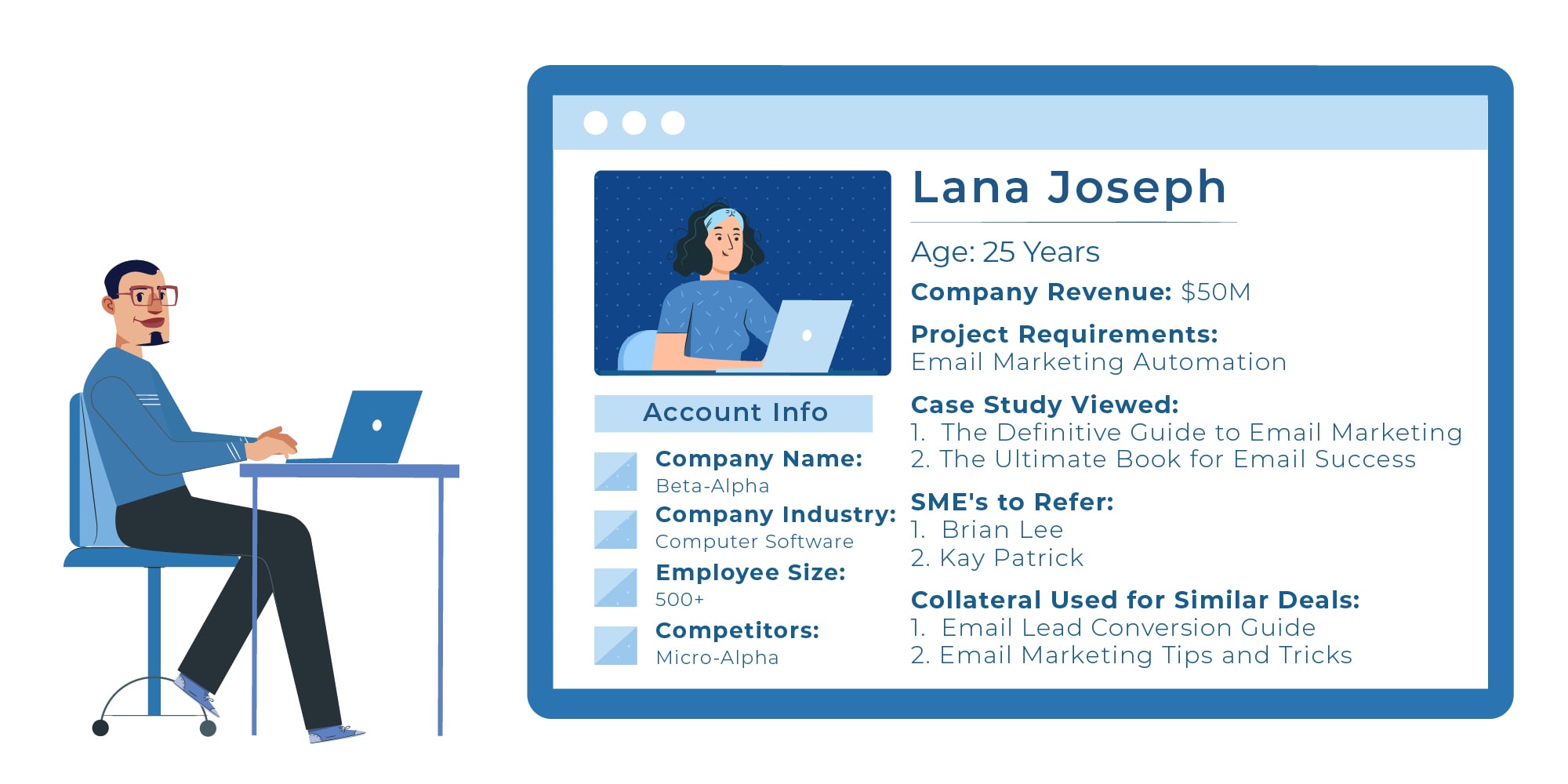
This is just one example of how KG helps your sales reps to leverage enterprise search to receive more than just search results.
How It Elevates Customer Experience
Marie bought a printer from XR Technologies, a hardware and software provider. She uses its support community regularly for solving printer-related issues. She encounters an issue and logs into the community and types, ‘how do I change the ink cartridges in all in one printer?’
The search engine suggests her relevant results even before she has clicked a result.
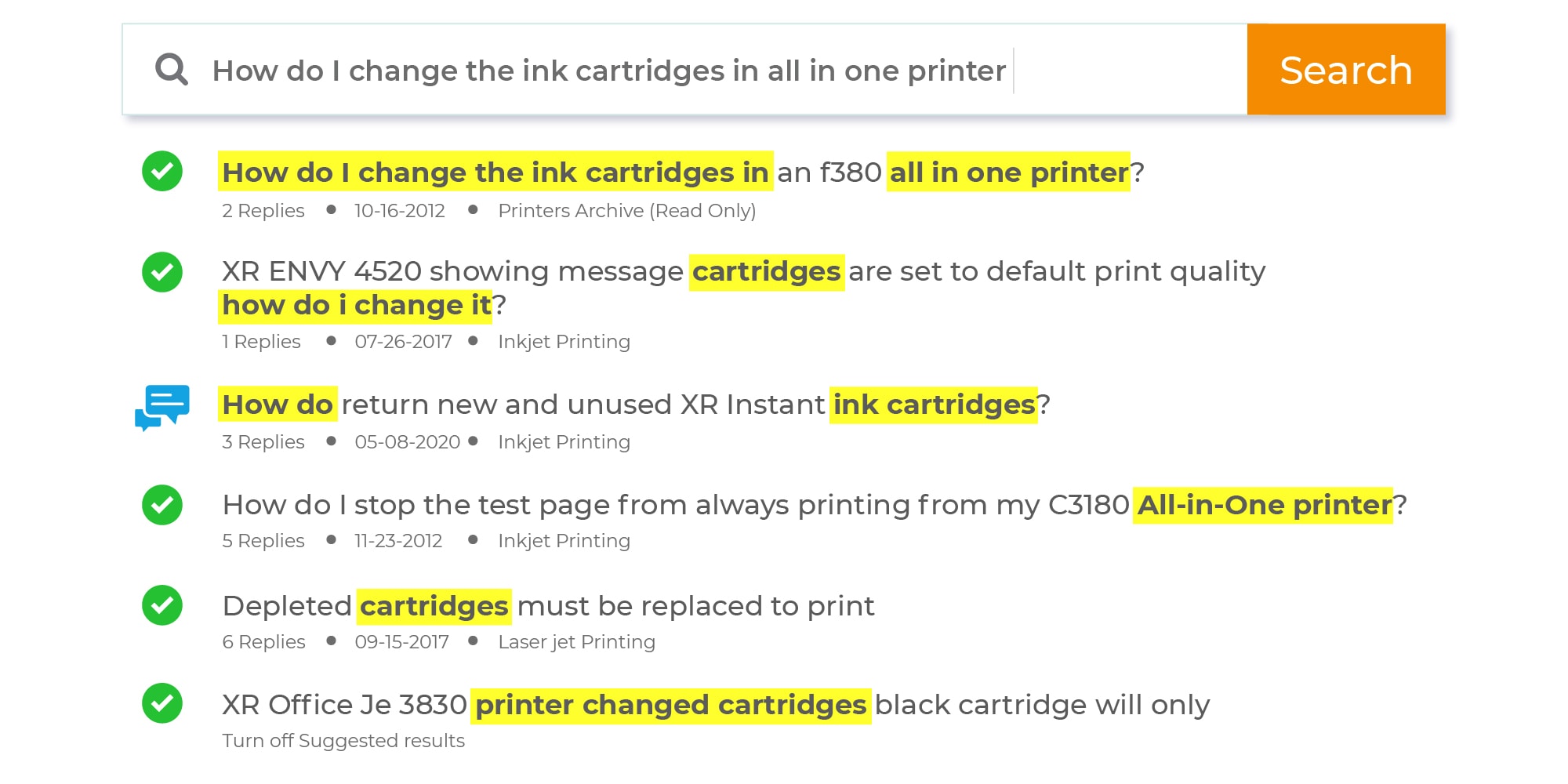
On top of it, Marie is displayed with additional information on the right side.
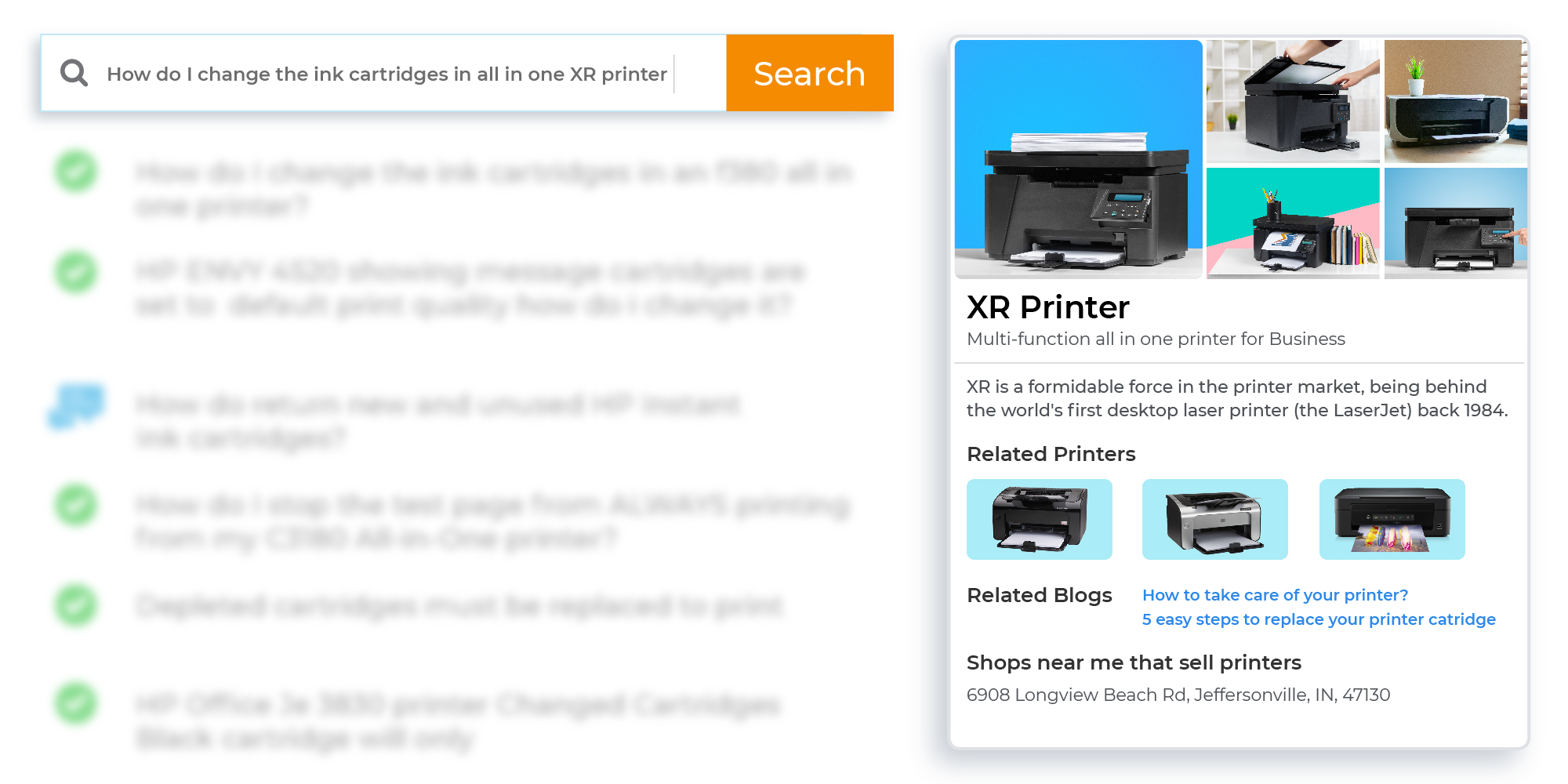
The best part about a KG is that you can use it in a way that best fits your business needs. For instance, when customers search for something on your support community, you can present them with proactive recommendations of articles and blogs that propel self-service. But if you have an e-store, you could also suggest complementary items that will spark their interests and help you cross-sell products.
The KGs are actually helping an enterprise search engine,
In Transcending the Boundaries Of Keyword Search
When you have a knowledge graph to the rescue, your enterprise search engine doesn’t just search keywords in documents or data pools. They go beyond the basic search and deliver more relevant results. It unifies data silos in your organization. This is particularly useful if you are looking for boosting self-service on your portals using advanced search capabilities.
To Derive Hidden Facts & Insights
It’s a well-known fact that companies have so much data with hidden potential, just not the right tools to make the most of it. Knowledge graphs extract rich insights from structured and unstructured data for the reuse of ‘hidden’ relations which enables you to make better business decisions.
In Generating Automatic Recommendations
Recommender systems have been made famous by Netflix, and eCommerce giant Amazon. You can leverage knowledge graphs to store a vast amount of varied information which can help the AI of your search platform in finding relationships between entities much like them. Then, your search engine can provide proactive & personalized recommendations to elevate customer experience manifold. You can use it anywhere from your support communities to employee training portals for improving both CX and EX.
The Bottom Line
Having said all the above, curating and employing KGs for effective use is no piece of cake, in fact, it’s pretty much the opposite.
We have been recognized for being the youngest product to ride the Forrester wave: Cognitive Search, Q2 last year and honored with two Stevies for sales and customer service this year. If you enjoyed our blog and would like to get in touch with us to discuss KGs or enterprise search for your business, click here.

